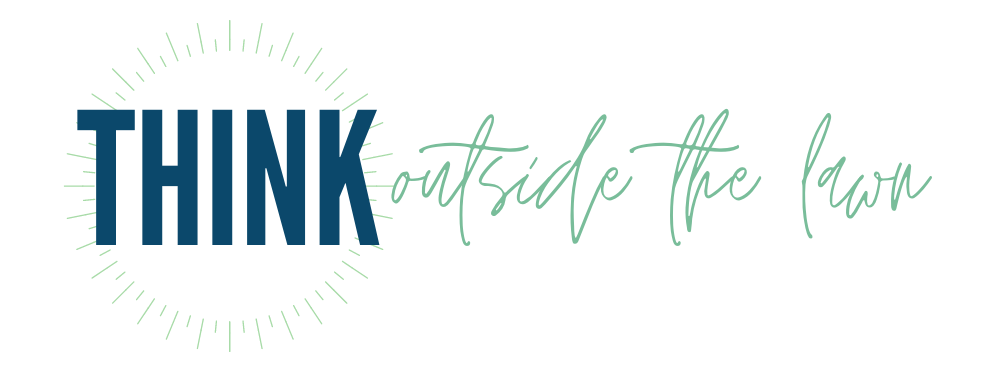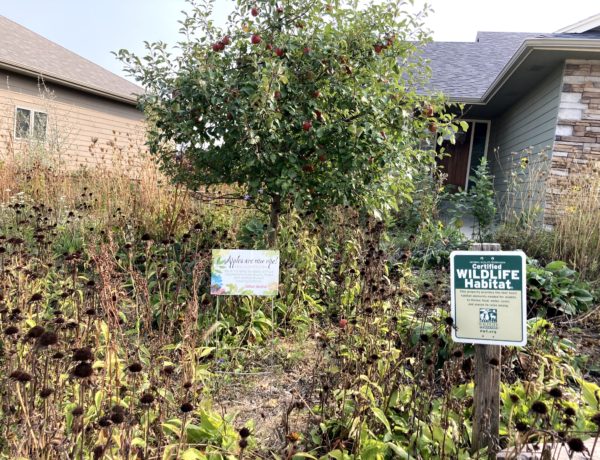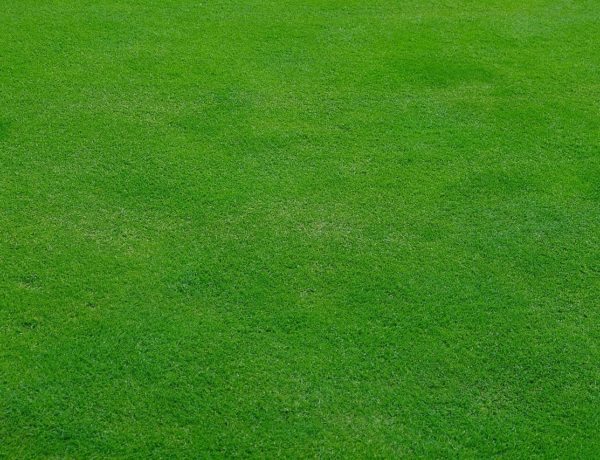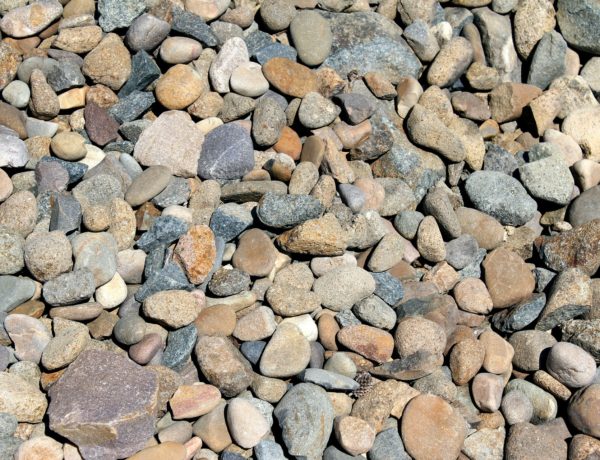Milkweed is one of my favorite plants! I love milkweed so much that a friend posted this meme on my timeline.

There are so many amazing and fascinating things about milkweed to cover so let’s get started.
Common milkweed (Asclepias syriaca) is a plant native to southern Canada and much of the US east of the Rockies. It is both hated by farmers and pristine lawn keepers and loved by ecologists and conservationists.
The Monarchs and the Menu
Milkweed has particularly seen an increase in attention and acceptance after numbers of the monarch butterfly started suffering. All species of milkweed are a larval host plant for the monarch butterfly. That means the butterfly will lay eggs on the milkweed plant, and when the caterpillar hatches, it eats the milkweed. Scientists seem to agree that monarchs have evolved to develop an immunity to the cardiac glycosides in milkweed plants which in turn makes them toxic to their predators.
A lot of people know this fact, but they correlate it to a belief that all milkweeds are also toxic to humans. And while most milkweeds are indeed inedible to humans, common milkweed, Asclepias syriaca, is very edible to us. You can eat every part of the common milkweed except for the roots, which can still be used as medicine. You just want to cook it first.
Here are some recipes from Forager Chef.
Here is a video I made for Project Food Forest a few years ago. It’s not a great video, and no I don’t have a recipe for what I made. I am a fly-by-the-seat-of-my-pants type of cook. Just throw stuff together and see if anyone will eat it. But there’s some useful info in there.
Some people are appalled when they hear me advocate for eating milkweed. They worry that if we eat it, it won’t be there for the monarchs. That’s a sweet sentiment, but milkweed is like asparagus, but tougher. If you are eating the shoots in the spring, once you cut them at the base, they will easily resprout from the root. And most people will let them, because then the flower buds, flowers, young pods, and floss/silk are all edible as well. It just keeps giving all summer. And then it comes right on back next summer. In fact, I believe that the more people who know milkweed is edible and grow it for that reason, even more milkweed will be available for monarchs. So go ahead: grow it and eat it. But if you are going to forage from the wild, only take a small portion of what’s there.
Here’s a video of a monarch caterpillar forming a chrysalis on my house. This caterpillar grew up on my milkweed plants (that I grow and eat some of) then crawled to the rock on our house to pupate (this is a normal behavior — they do not normally pupate on the milkweed plant).
Then a couple weeks later it emerged and flew away as a healthy monarch.
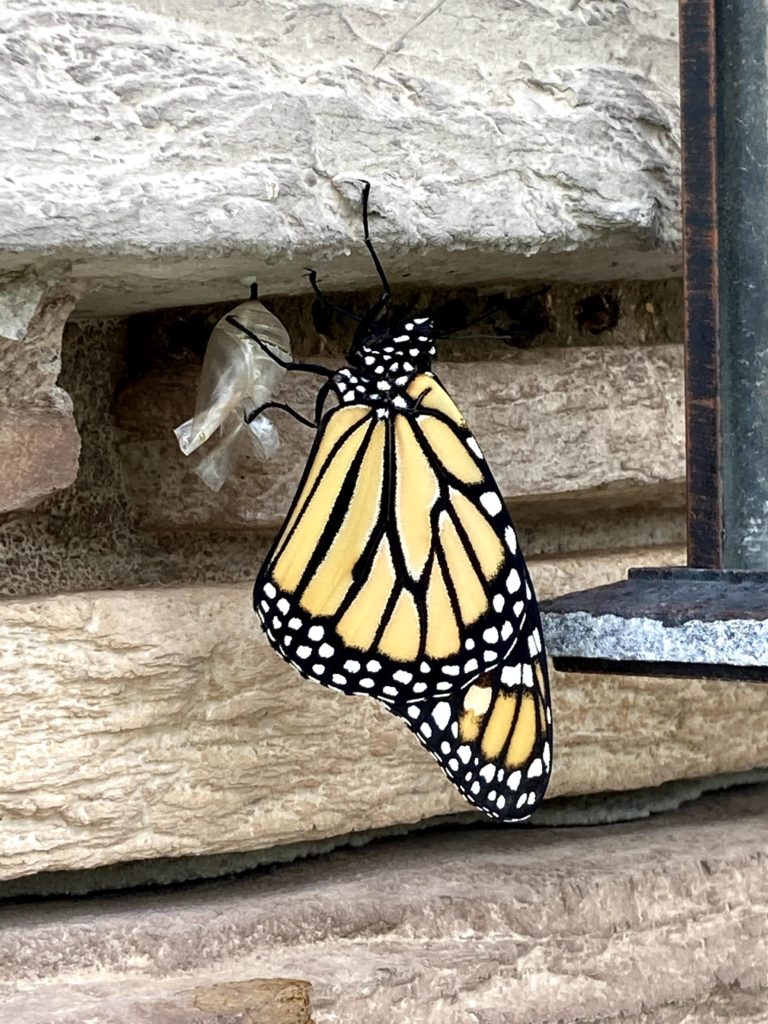
Ecosystem Enhancement
One of my favorite things about milkweed is its role in its local ecosystem. If you’ve ever grown milkweed, you’ll know what I’m talking about. By mid- to late summer, the leaves will be covered in aphids, ants, eggs, poop, and honeydew. You’ll see tons of either one or both species of milkweed bug, monarchs in all life stages,insect pollinators of all kinds, ants farming aphids for their honeydew, ladybugs eating aphids and laying eggs near them, and wasps and flies coming to sip honeydew from the aphids. Many of the insects that milkweed and its inhabitants attract are predatory insects that eat or parasitize “pest” insects, including wasps (these miraculous insects with a bad rap are very welcome in our yard and none of us, including two kids, have ever been stung).
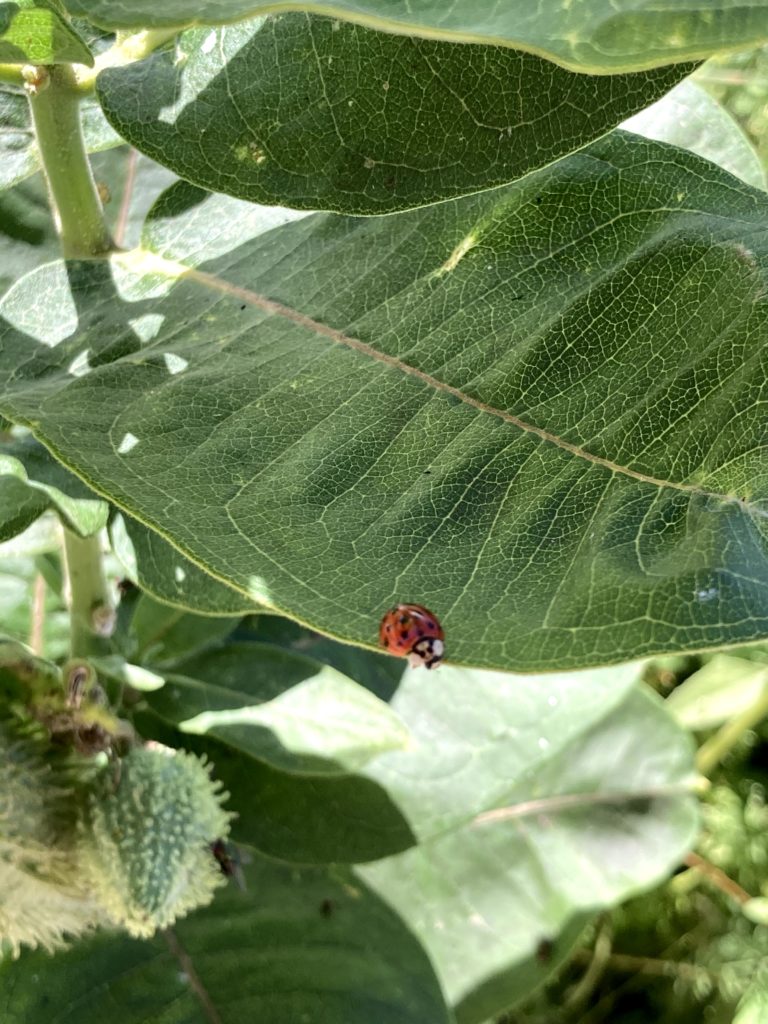
Milkweed attracts beneficial insects like ladybugs. They eat the aphids. 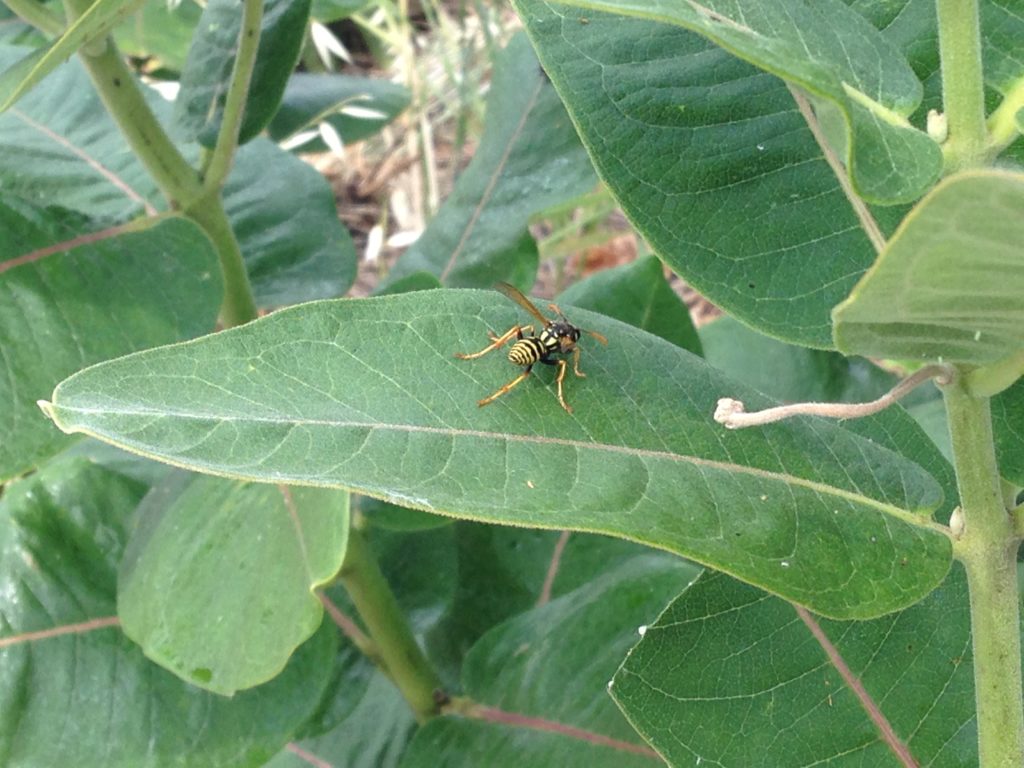
Milkweed attracts beneficial insects like wasps. They like the honeydew from the aphids. 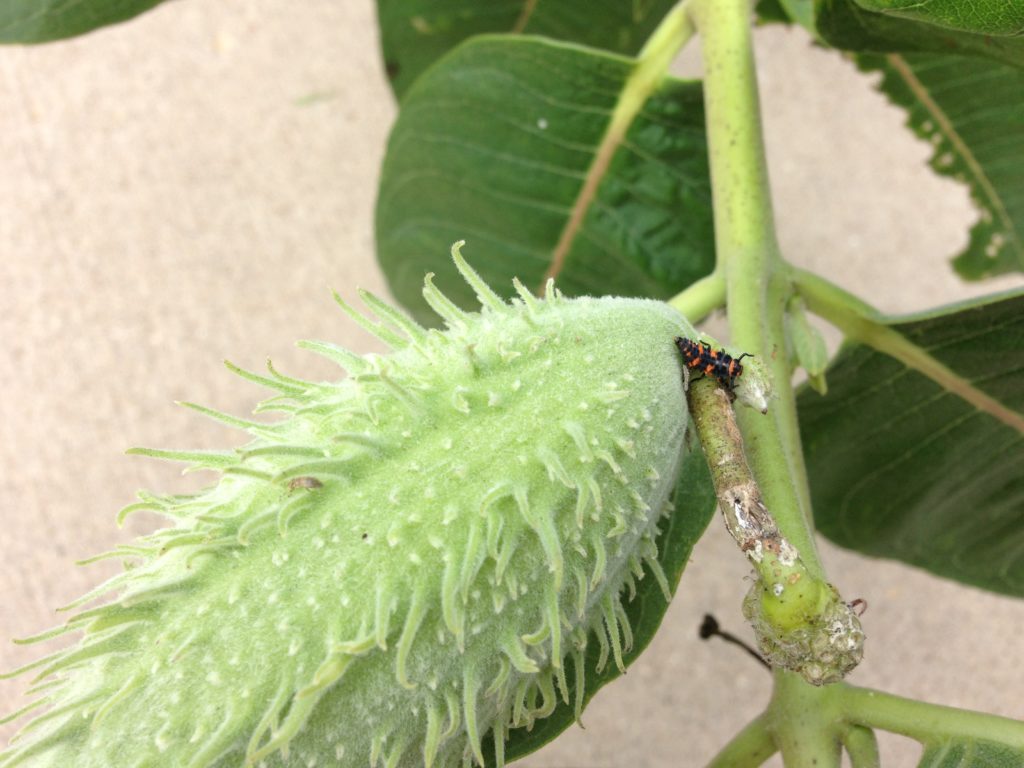
Milkweed attracts ladybugs. Aphids are a great source of food for the larvae (pictured here). 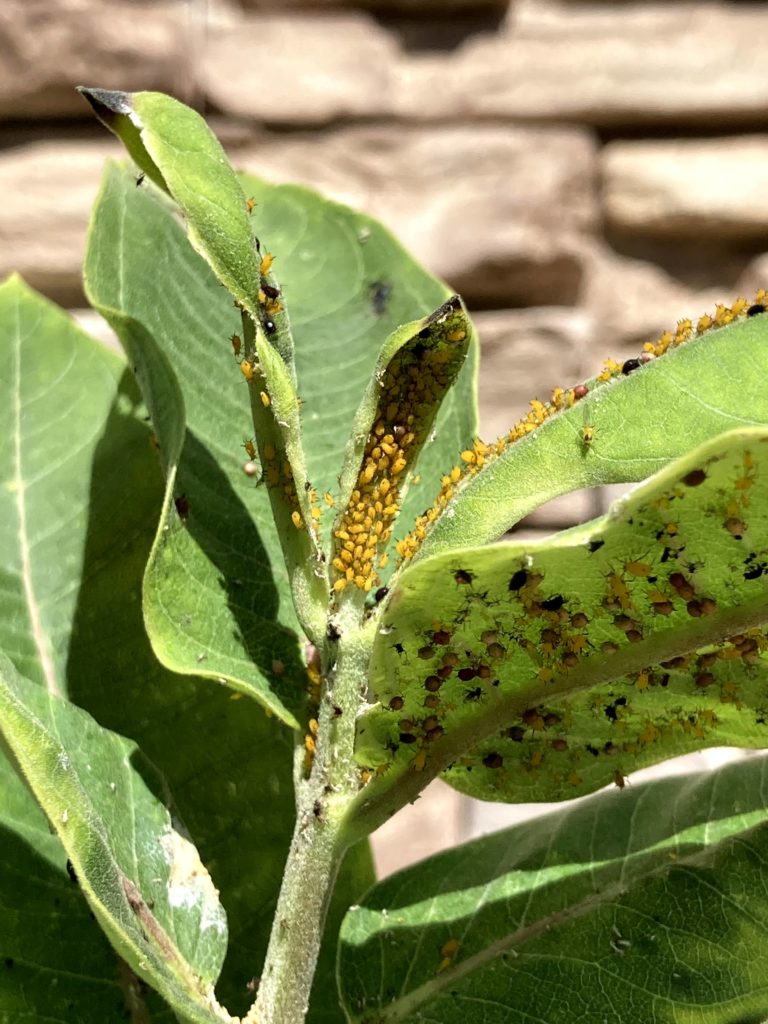
Aphids and life on milkweed 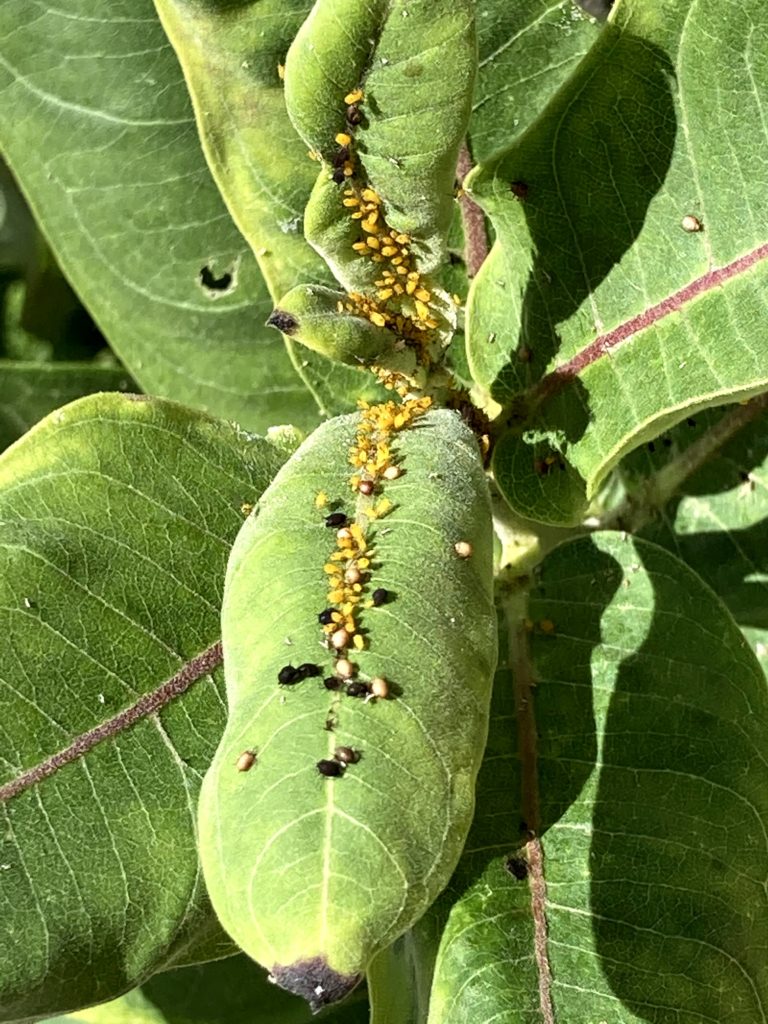
Aphids and life on milkweed
I often see people posting pictures of this lively activity in gardening groups, and there is usually at least one gardener advising them to hose it off or remove the plant. No, naughty! It is precisely this activity that makes milkweed so very useful in a guild. “My milkweed brings all the bugs to the yard!” That’s your new singing mantra when you see this happen on your milkweed plants. Rejoice in it. Pay gratitude to it. Teach your kids with it. But don’t hose it.
Plant Profile
So, milkweed is native, edible, medicinal, and an ecosystem inoculant. What else does it do? Here’s the plant profile.
| Family | Asclepiadaceae |
| Genus | Asclepias |
| Species | syriaca |
| Common Name | Common Milkweed |
| Habit | Herbaceous |
| Height Min | 3 ft |
| Height Max | 6 ft |
| Width Min | 0.5 ft |
| Width Max | Spreading |
| Foliage Color | Green |
| Flower Color | Purple |
| Bloom Time | June-Aug |
| Pollination | Insects, self-fertile |
| Duration | Perennial |
| USDA Zone Hardy Perennial Min | 4 |
| USDA Zone Hardy Perennial Max | 9 |
| Reproduction | Rhizome, Underground stem, self-seeding |
| Native US | Y |
| Aggressive Behavior (High, Med, Low) | Med |
| Invasive notes | Not invasive where native. |
| Sun Requirement | Full sun |
| Moisture Requirement | Avg |
| Drought Tolerant | Yes |
| pH Description | Calcareous |
| N Fixation | No |
| Root Structure | Rhizome and deep vertical roots reaching up to 12.5 down |
| Biomass Production | Medium |
| Soil Penetration | Yes |
| Edible Leaf/Stalk | Yes |
| Leaf notes | Boil 6″ shoots until tender |
| Edible Fruit | Yes |
| Fruit notes | Boil pods under 1″. Pods over an inch and before seeds turn brown, remove white floss and add to casserole for cheese substitute |
| Edible Seed | No |
| Edible Root | No |
| Root Notes | Roots are medicinal |
| Edible Flowers | Yes |
| Flower notes | Flowers and flower buds, but the flowers smell so good and then produce edible fruits and seeds not to mention the nectar for insects! |
| Storage Time | 1 year frozen, canned, or fermented and refrigerated |
| Poisonous Parts | No |
| Poisonous notes | Common milkweed (A. syriaca is NOT poisonous. You don’t even need to boil multiple times. Just once. The myth of it’s poisonousness supposedly comes from a forager who tried to boil and eat dogwood shoots instead of milkweed (a poisonous look-alike) and also because monarchs eat milkweeds and become toxic to predators. |
| Medicinal | Yes |
| Medicinal uses | Root – see medicinal herb site, Milky sap – wart remover |
| Insectary | Yes |
| Larval Host | Yes, Monarch |
| Hummingbirds | In places where they nest, they will use the floss for nests |
| Wildlife food | Mostly insects |
| Wildlife shelter | Yes, invertibrates |
| Pest Confusion | No |
| Fragrance Pleasant to Humans | Yes, flowers |
| Deer Resistant | Yes |
| Beauty (urban, H, M, L) | Medium. High when flowering, lower when leaves are covered with aphids, poop, and honeydew. |
| Fuel | No |
| Fiber | Yes, stem and floss |
| Dye | Green |
| Thorns | No |
| Tolerates juglone | Yes |
| Allelopathic | No |
| Purchase Locations | Prairie Moon Nursery. Usually if you wait, milkweed will just show up. You can also take some seeds from friends or forage them. |
Use it!
Milkweed has been used for dye, fiber (both stem and silk), highly bouyant life jacket stuffing and sleeping bag insulation (World War II), spoons (dried pod halves), sugar (processed nectar from blossoms), wart medicine (milky sap), cough medicine (root), and food for hundreds of years. It also increases life activity in our guilds, attracts pollinators and pest predators, accumulates nutrients from the subsoil (usually a purpose of pioneer species), creates winter habitat for tiny wildlife (leave those stems standing until spring), and adds to the mulch each year. Common milkweed is one of the most useful plants in an ecological gardeners’s arsenal. If you can grow it, you definitely should.
Do you grow milkweed? What uses do you observe?
